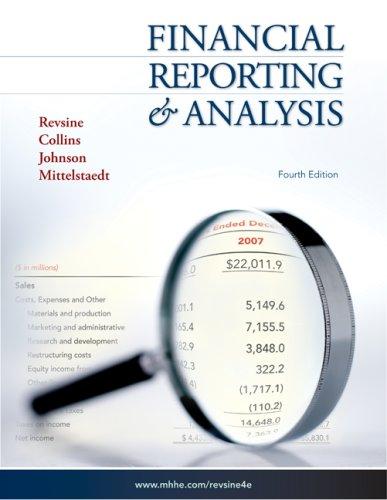Question
Page 2 - 39 are hidden from this preview 138.P. Harrison Limited manufactures and sells highly faddish products directed toward the preteen market. A new
Page 2 - 39 are hidden from this preview
138.P. Harrison Limited manufactures and sells highly faddish products directed toward the preteen market. A new product has come onto the market that the company is anxious to manufacture and sell. Enough capacity exists in the company's plant to manufacture a maximum of 35,000 units of the new product each month. Total fixed costs (both manufacturing and non-manufacturing) will amount to $60,000 per month. The company's controller projects an operating loss of $15,000 if the company manufactures and sells 30,000 units of the new product per month.The marketing department predicts that demand for the new product will exceed the maximum 35,000 units that the company is able to manufacture in its own plant. Additional manufacturing capacity can be rented from another company at a fixed cost of $20,000 per month to manufacture 50,000 units of the new product monthly. The variable costs to manufacture and sell units of the new product made in the rented facility will be higher at $3.75, due to somewhat less efficient operations than in the company's own plant. The new product, however, will sell for $4.50 per unit, regardless of where it is manufactured.Required: a) Calculate the monthly break-even sales for the new product in units if the company operates only in its own plant, that is, it manufactures a maximum of 35,000 units. (NOTE: If there is no break-even sales level, state so together with the supporting calculations and reasoning.)b) Calculate the monthly break-even sales for the new product in units if the company rents the additional manufacturing capacity, that is, it manufactures more than 35,000 units. NOTE: Again, if there is no break-even sales level, state so together with the supporting calculations and reasoning.)c) Suppose there are NO manufacturing capacity constraints for the manufacture of the new product at either the company's own plant or the rented facility. (i) At what level of non-zero production and sales (in units) would you expect the company to beindifferent between the two manufacturing facilities? (ii) Calculate the degree of operating leverage at a monthly sales level of 50,000 units at EACHmanufacturing facility. (iii) Which one of the two manufacturing facilities will be MORE advantageous for themanufacture of the new product, assuming the marketing department predicts very strong andincreasing demand for the new product? Explain, strictly on the basis of the degree of operatingleverage calculations in Part c (ii) above.
Image of page 40
139
Step by Step Solution
There are 3 Steps involved in it
Step: 1

Get Instant Access to Expert-Tailored Solutions
See step-by-step solutions with expert insights and AI powered tools for academic success
Step: 2

Step: 3

Ace Your Homework with AI
Get the answers you need in no time with our AI-driven, step-by-step assistance
Get Started


